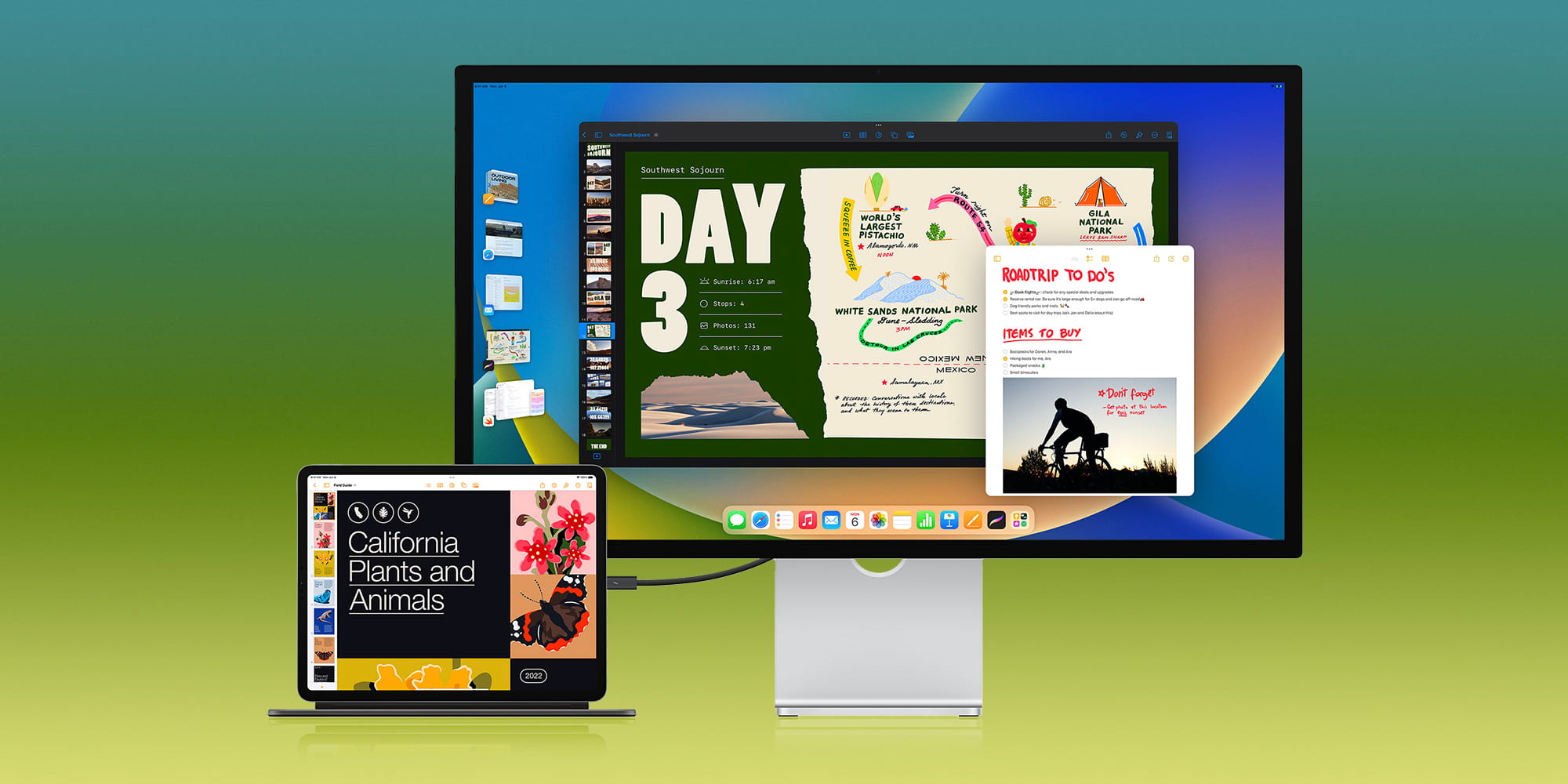
With iPadOS 16, Apple announced multiple new features that are exclusive to iPads based on the M1 chip, such as Stage Manager for running apps in windows and also virtual memory swap for the first time on an iOS device. Interestingly, while memory swapping is reportedly one of the requirements to have Stage Manager, it turns out that the base model iPad Air 5 lacks this capability.
For those unfamiliar, virtual memory swap is a feature often used by computers to reallocate some storage as virtual RAM when the computer’s actual RAM is already being fully utilized by the system and apps. Even Macs do memory swapping, and now this feature will be available on iPads for the first time with iPadOS 16.
According to Apple, iPadOS 16 allows the most demanding apps to use up to 16GB of storage as temporary RAM. And of course, amid the controversy of limiting the Stage Manager feature to iPad models with the M1 chip, Apple claims that running iPad apps in windows requires super-fast virtual memory swap, which is theoretically only possible with the M1 chip.
But here’s the thing. As noted by developer Steve Troughton-Smith on Twitter, the base model of the iPad Air 5 is not compatible with virtual memory swap. That’s probably because the 64GB of internal storage is not enough for memory swapping. As Apple quietly suggests on its website, memory swapping on the iPad requires at least 128GB of storage in addition to M1.
This is totally understandable, but then comes the question: Why does Apple keep saying that virtual memory swap is a requirement for Stage Manager when the 64GB iPad Air 5, which supports Stage Manager, clearly has no virtual memory swap?
Stage Manager controversy

Since the announcement of iPadOS 16 at WWDC 2022, multiple users have been criticizing Apple’s decision to limit Stage Manager to iPads with the M1 chip. Apple’s PR team quickly got company executives out in public to talk about how the feature demands advanced hardware, but some previous generation iPad Pro owners remain skeptical about these requirements.
Stage Manager lets users run up to eight apps simultaneously on the iPad. In addition, it enables support for one external display that can also be used to interact with multiple apps in windows.
The M1 chip requirement for Stage Manager is somewhat understandable. M1 iPads have at least 8GB of RAM and they’re certainly more powerful than other iPads, but it seems that Apple could’ve made the effort to bring Stage Manager to other iPads in a certain way and it chose not to.
Here’s what Apple’s head of software engineering Craig Federighi said in a recent interview:
It’s only the M1 iPads that combined the high DRAM capacity with very high capacity, high performance NAND that allows our virtual memory swap to be super fast.
Federighi emphasizes that Stage Manager was only made possible because of virtual memory swap, which is unavailable on the base model of the iPad Air 5. He also claimed that M1 is responsible for the animations and shadows when using Stage Manager. Meanwhile, Intel Macs that are less powerful than an iPad will get Stage Manager with macOS Ventura – does Apple know how bad Intel GPUs are for rendering animations?
9to5Mac’s Take
As pointed out by my 9to5Mac colleague Ben Lovejoy, Apple could’ve brought Stage Manager with some limitations to older iPad Pro models, or even to the 4th-generation iPad Air.
Working with a windowed interface is not only about the amount of apps you can open simultaneously. Personally, I rarely open more than four apps at the same time on my Mac, but I still like being able to organize them the way I want. Some with larger windows, some with smaller ones.
If you think about the current state of multitasking in iPadOS 15, every iPad model can already run up to three apps simultaneously without performance issues. You can have two apps running side by side with Split View and an extra app running with Slide Over – not to mention Picture-in-Picture and Quick Note.
I’m quite sure that A12X and A12Z iPad Pro and owners, who surely bought these iPads with the promise that “their next computers wouldn’t be computers,” would be more than happy to have Stage Manager with a limit of three to four apps instead of eight. iPads can already do this without a lot of RAM, memory swap, or the powerful M1 chip for rendering animations and shadows.

But what do you think? Could Apple have optimized Stage Manager to work with non-M1 iPads? Let me know in the comments below.
FTC: We use income earning auto affiliate links. More.


Comments